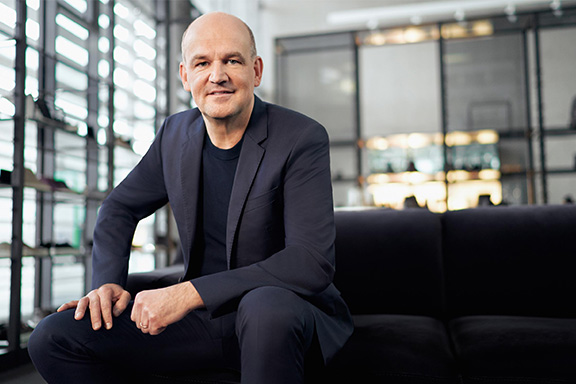Material strategic risks
HUGO BOSS considers collection risks, risks to the brand and corporate image, and investment risk to be among the material strategic risks.
Collection risks
Collection risks can arise from changes in fashion and lifestyle trends. Challenges in the collection development process above all involve recognizing trends in a timely manner as part of creative management and incorporating these as quickly as possible into commercially successful collections. Research and Development
Intensive analyses of relevant target groups and markets and of the successful sale of previous collections aim at reducing collection risks. Also, proximity to customers in the Group’s own retail business and the increasing use of the data acquired as part of systematic customer relationship management (CRM) facilitate the recognition of changes in buying behavior at an earlier stage and allow these to be taken into account when developing future collections. In the course of the ongoing digitization of the collection development process, HUGO BOSS continues to shorten development times in order to respond even more quickly to global trends. Research and Development
In recent years, the casualwear and athleisure segments in the global apparel market have developed more strongly than classic tailoring. With the consistent expansion of its casualwear and athleisurewear offerings, HUGO BOSS is looking to respond to this development in a targeted manner. The Company will continue to strengthen its collections in this area in future. Exploiting the full potential of casualwear is one of the Company’s key strategic initiatives. Group Strategy
The potential negative impact from collection risks are considered to be high. Based on the risk mitigation measures implemented however, Management deems the likelihood of occurrence to be unlikely.
Risks to the brand and corporate image
The occurrence of risks for the brand and corporate image can have a negative impact on the economic success of HUGO BOSS. For example, an inadequate quality of the products or services on offer in the own retail business, an uncontrolled pricing and markdown policy, the use of distribution channels that are damaging to the brand, an unattractive marketing mix or non-compliance with laws or social standards could have a damaging impact on the brands’ image.
As a consequence, protecting and maintaining the brand image has a high priority at HUGO BOSS. Ensuring a globally uniform brand and shopping experience, strict quality controls, a centrally managed pricing policy, the constant focus on developing the distribution strategy, an active compliance management system and exacting occupational and social standards contribute towards this target. In addition, legal trademark protection and the prosecution of product piracy are important efforts to secure the brand image.
The corporate image of HUGO BOSS is reflected in how it is perceived by its stakeholders. All communication activities are managed by the central departments Corporate Communications, Investor Relations and Corporate Sustainability. These are involved in continuous dialog with all important stakeholder groups. Compliance with laws, standards and guidelines, both within the Group and by partners, is also regularly verified. The Management considers a negative impact on the brand and corporate image to be unlikely. The potential impact on the Group’s net assets, financial position and results of operations is considered to be significant.
Investment risks
The Group’s own retail activities come with investment risks in connection with the modernization of its store network, the selective opening of new stores, as well as the cross-channel integration and digitization of the Group’s own retail business. The risk of bad investments refers for example to investments in stores for which long-term rental agreements have been entered into but which in retrospect fall short of the Group’s profitability targets. Bad investments can also result from the development and implementation of new furniture designs and digital elements.
The risk in connection with impairment of the value of ordinarily depreciated property, plant and equipment, intangible assets, right-of-use assets at the level of the Group’s own retail stores, and goodwill is the largest risk position in this area. In this context, in fiscal year 2020, HUGO BOSS recorded non-cash impairments of non-current assets of EUR 110 million, relating directly to the negative impact of the pandemic on the Group’s retail business. In principle, it cannot be ruled out in future that a deterioration in the business outlook as well as changes in market rent levels may lead to an impairment of the Group’s assets. However, as in fiscal year 2020, such an impairment would be non cash in nature. For 2021, also in light of the persisting high uncertainties with regard to the further development of the COVID-19 pandemic, HUGO BOSS considers the risk of non-cash impairments as possible, with a potentially high financial impact. Notes to the Consolidated Financial Statements, Note 10
For extensive investment projects there is a specific authorization process. Apart from qualitative analyses, e.g., with respect to potential locations of own stores, this also includes an analysis of each project’s present value. Central investment controlling appraises the planned investment projects with respect to their contribution to the Group’s profitability targets. In addition, subsequent analyses are conducted at regular intervals to verify the profitability of projects that have already been realized. Appropriate countermeasures are taken in the event of any negative deviations from the profitability targets originally set. The Group’s investment risk is considered to be possible overall, with a potentially high financial impact. Group Management


